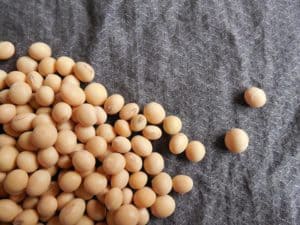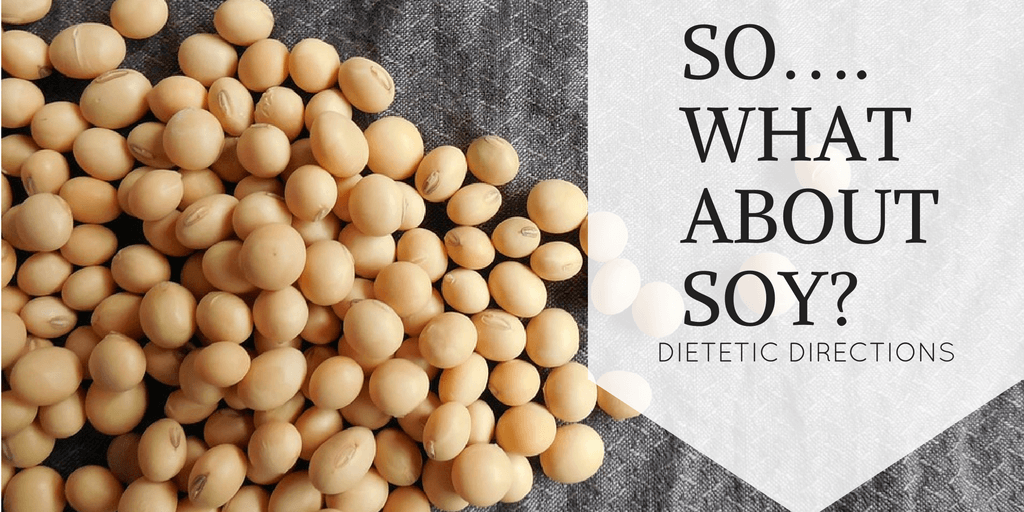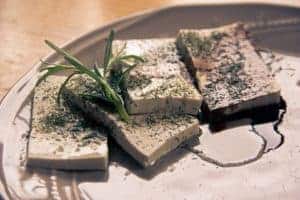Usually towards the end of a one-on-one dietary counselling session I will often be asked, “so…. what about the soy bean? After hearing the same question various times, I think it is time to set the facts straight. Is soy cause for concern? Should we be avoiding soy? Should we be consuming more soy? Let’s find out!

What is soy?
Soy products have origin to the soy bean. They are part of the “legume” family, which is the seed, pod or other edible part of a plant. Soy beans are native to East Asia and continue to be a central part of their diet. Soy is a popular choice for vegetarians since it is the only plant-based protein that is also a complete protein meaning that it contains all of your essential amino acids (ones your body cannot make on its own).
Where is soy found?
Common sources include:
- Soy milk
- Soya nuts
- Edamame beans (soy bean pods popular in Japanese cuisine)
- Tofu
- Tempeh (fermented soy)
- Soya sauce
- Soybean oil
- Textured vegetable protein (TVP)
Nutritional contribution of soy:
Overall, soy is a healthful dietary contribution for both men and women. Judging by all the questions and speculation out there, this is a very hot research topic that is constantly evolving. So remember to stay tuned!
To break it down, soy is a powerful health food since it contains phytoestrogens or compounds found in plants that function similar to estrogens. Remember that “phyto” means plant. Foods containing phytoestrogens appear to offer protection against cancers like breast and prostate. The process of how the phytoestrogens work in the body is not fully understood but it appears that phytoestrogens can mimic body hormones, thus interfering with estrogen binding. Girls who start consuming soy at a younger age appear to benefit more for breast cancer prevention. Nevertheless, the Journal of the National Cancer Institute published a large-scale research study in 2012 that found increased consumption of phytoestrogens showed a decrease risk of endometrial cancer among post-menopausal women.
Did you know that phytoestrogens have antioxidant effects in the body?
Well they do. This means phytoestrogens reduce the overall risk of cancer and cell expansion. Phytoestrogens being a similar structure to estrogens are also found to be beneficial in maintaining bone mass or preventing bone breakdown after menopause. Since menopause involves the loss of estrogen production by the ovaries, this leads women to be more susceptible to osteoporosis. Therefore, phytoestrogens appear to be particularly beneficial among this population group.
Similarly, I am sure you have heard that soy may play a role in combating menopausal symptoms, which are again linked to declining estrogen. This is a research area that is still evolving. A 2009 Cochrane Review (very high quality research) summarized findings on this topic and stated that although there is no evidence of harm with phytoestrogens consumption, there is conflicting research as to whether phytoestrogens worked better than no treatment at all in treating hot flashes and night sweats. Therefore, it is safe to say that if you are a post-menopausal woman consuming soy to help with your hot flashes it is certainly not a bad/harmful idea but the ‘significant’ benefit is still under debate.
Soy also contains ‘heart healthy’ unsaturated fats which helps in lowering the risk of high blood pressure, high cholesterol by decreasing your ‘bad’ cholesterol levels. Vegetarian alternatives like TVP also replace other protein sources like beef, which are high in the ‘saturated fats’ which increase your cholesterol.

Bottom line:
Research continues on this hot topic. Based on the latest research, I feel confident stating that soy is a safe contribution to an otherwise healthy diet. Aim for 1-2 servings of soy a day for the phytoestrogen health benefit. You may even want to try vegetarian alternatives like soy products on a Meatless Monday.
Be happy & healthy with soy~






